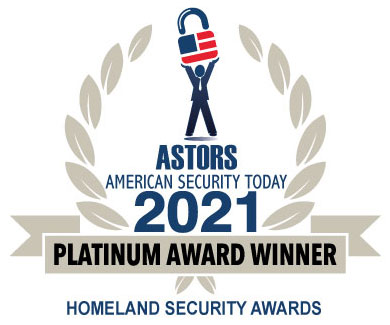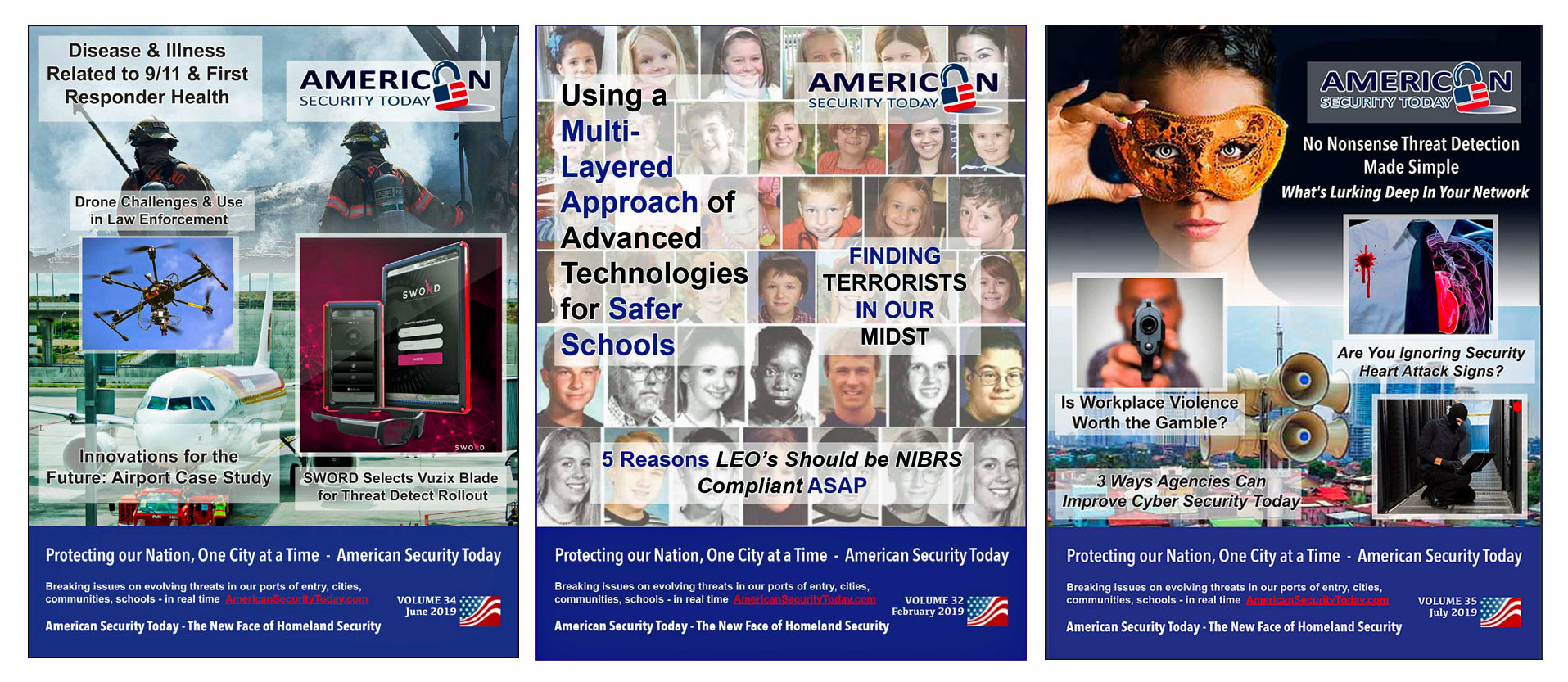
Guest Editorial by Adam Robertson, Fortem Technologies founder and CTO
Some people say I have my head in the clouds. They’re right, and I’m in good company.
Advances in UAV technology have made it possible to think of a world where many of our everyday activities happen in the air — from having a package delivered via drone, to traveling through a city to work in a UAV.
We’re already seeing incredible examples of this technology in action.
Zipline’s autonomous delivery aircraft is used to drop vital medical supplies and blood in countries like Ghana and Rwanda, where traditional road delivery is impossible.
(See how startup Zipline specializes in drones that deliver blood, vaccines and other medical supplies in Africa. Courtesy of CNET and YouTube.)
Last year, Amazon received a Federal Aviation Administration (FAA) certificate to begin drone deliveries. Wing delivered books to Virginia students stuck at home during the height of the coronavirus pandemic.
Klein Vision’s hybrid car-aircraft, AirCar, recently ran a 35-minute test flight in Slovakia.
(Meet AirCar, a dual-mode car-aircraft vehicle as it fulfills a key development milestone in a 35-minute flight from the international airport in Nitra to the international airport in Bratislava on June 28th, 2021. Courtesy of KleinVision and YouTube.)
The technology is here, but we are far from actualizing this futuristic vision of advanced air mobility.
The FAA’s BEYOND program is a step in the right direction, especially with its focus on “beyond visual line of sight (BVLOS) operations that are repeatable, scalable and economically viable.”
But in order to safely fulfill a goal of advanced air mobility, we have to consider more than BVLOS operations.
We must digitize the airspace to understand, in real-time, what’s there, where it’s going, and whether it presents a threat to other aircraft, people, or things on the ground.
A wild west
Drones and UAVs have long been operating under their own set of rules separate from the National Airspace System (NAS).
Any UAV operating below 400 feet is operating in the ‘wild west’. There is no traffic control telling you what’s flying around you.
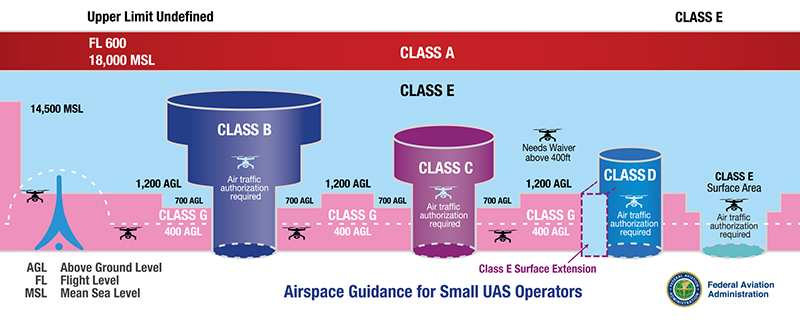
While this isn’t an issue today, in order for commercial UAVs to become a reality, we need to know what’s flying in the air at all times.
The new remote ID rule is the FAA’s answer to integrating drones in the national airspace.

This rule requires UAVs to broadcast identification and location information that can be received by a third party, such as law enforcement.
In addition, the new Unmanned Aircraft Systems Beyond Visual Line-of-Sight Operations Aviation Rulemaking Committee (UAS BVLOS ARC) was created to provide recommendations to the FAA for the requirements needed for safe, scalable, and economic UAS BVLOS operations that are not under air traffic control.
Essentially, to figure out a way to allow for the commercial use of UAVs and the technology needed to operate safely. Again, a step in the right direction.
But even before we get to BVLOS, we must digitize the airspace so that we can fully monitor the traffic in the air, much like we do today with traffic on the ground.
(Learn How Fortem Technologies provides total airspace security and defense for an autonomous world, protecting designated areas such as venues, infrastructures, sites, cities, and regions from the ground up. Fortem SkyDome® and TrueView® radar digitize any environment to detect, classify and provide threat assessment for all ground and airborne objects, maximizing situational awareness. Skydome provides intelligent data collection and analytics, integrates with other security sensors and systems, and ensures an appropriate integrated response better than any system in the world. Courtesy of Fortem Technologies and YouTube.)
A roadmap for the skies
How we treat our air space could be analogous to how we treat our nation and states’ roads and highways. Over the last decades, state and local governments have invested in technology and infrastructure to digitize our roadways in an effort to make them safer.
Inductive loop detectors have been around since the 1960s. Used in coordination with traffic lights at roadway intersections and on freeways, they detect traffic changes and incidents, travel speed, and vehicle classification.
Microwave radar detectors can be used to detect vehicle presence, speed, and even pedestrians waiting for a crosswalk. Active infrared detectors are often used in tunnels to detect overheating vehicles or fires.
Automated license plate readers (ALPR) scan vehicle license plates for matches to a database of known criminal plates. If there’s a match, ALPR notifies law enforcement, who can take immediate action to take the car off the road.
Cameras of all kinds monitor when we run red lights, our speed, where traffic is building, or sometimes nothing at all. Dummy cameras passively encourage drivers to follow the law.
How to digitize the airspace
These technological advancements have changed the way we get around and made the roads we travel safer.
Just like we invest in our roads and bridges, we must invest in our UAV airspace and treat it like any other piece of infrastructure that must be monitored and maintained.
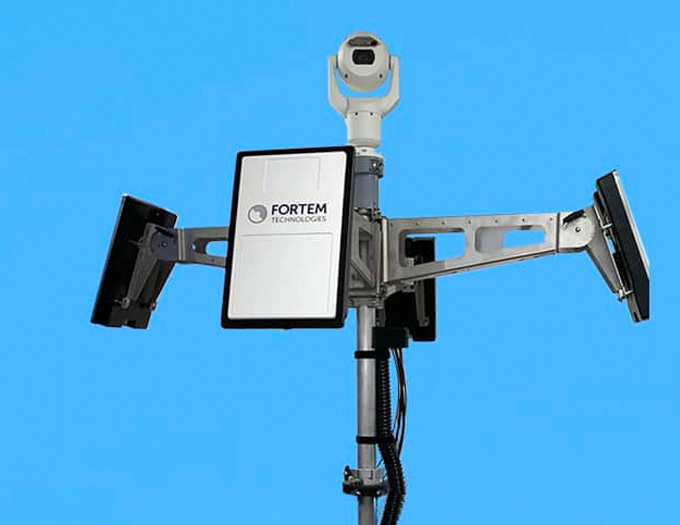
There’s a world in which UAV remote IDs can not only share their identification or location information to law enforcement but can also be shared with the FAA or a governing body that monitors the skies below 400 ft.
Just as radar detectors measure traffic presence and speed, sensors and radar can be used to monitor the air; identify high-traffic areas and the speed at which UAVs are traveling.
In conjunction with remote ID data, steps can be taken to identify offending UAVs and keep the air safer.
Digital-first airspace is necessary for advanced air mobility
In this future world, the airspace will be so busy that human air traffic controllers can’t do it alone — we must digitize the airspace.
We must have the ability to fully monitor traffic in the air below 400 feet, much like we do on our highways and roads on the ground.
Until we can fully digitize the airspace and understand what’s safely flying in the sky, we will not be able to actualize this vision of advanced air mobility, regardless of how accessible this technology becomes.
The future we have gives us the freedom to move. It will remove gridlock and it will move more people — we have to take it to the air.
About the Author
Adam Robertson, Fortem Technologies founder, and CTO, began developing miniature radar technology in graduate school over 24 years ago.

At Intel, Hewlett Packard, Agilent, and Honeywell he gained experience with semi-conductors, microwave electronics, aerospace instrumentation, and project/program management.
Adam was an instrumental leader in growing a small business from a handful of people to over 100 employees.
Developing drone-based miniature radar for intelligence, surveillance, and reconnaissance, and leading the business development team, Adam was key in securing more than $100M in contracts in the company’s first few years.
Most recently, Adam co-founded Fortem Technologies in 2016, and with the aid of investor capital developed the world’s most advanced miniature radar for drone detection and a highly autonomous flying drone hunter system.
Adam has also served as a Representative at Utah’s House of Representatives since 2018.
Fortem Technologies Named Double Award Winner in 2021 ‘ASTORS’ Awards Program

American Security Today’s Annual ‘ASTORS’ Awards is the preeminent U.S. Homeland Security Awards Program, and now entering its Seventh Year, continues to recognize industry leaders of Physical and Border Security, Cybersecurity, Emergency Preparedness – Management and Response, Law Enforcement, First Responders, as well as federal, state and municipal government agencies in the acknowledgment of their outstanding efforts to Keep our Nation Secure.
Fortem Technologies (First of Two)
Best Persistent Aerial Monitoring Solution
-
The SkyDome® 3.7 is a Counter-UAS System that can anticipate rouge drone vulnerabilities, alert personnel, cue defensive measures or launch a drone to autonomously neutralize malicious drones, so neither civilians nor communities are harmed, and minimize collateral damage in urban environments.

-
The SkyDome System has evolved to safely defeat larger and multiple targets where other systems are limited by cost, size, power, range, safety, or single drone targeting.
-
The 3.7 update is an example of that natural evolution where updates are added to a fundamentally disruptive autonomous architecture to create real, viable, ongoing solutions to the evolving drone threats.
-
Flexible and portable, the SkyDome® System deploys as a permanent installation or as part of a mobile solution, and is deployed at world-class venues, military bases, airports and infrastructures around the world and provides an effective and reliable solution.
(See a Live Virtual Demo of a prior SkyDome® System courtesy of Fortem Technologies, and YouTube.)
Fortem Technologies (Second of Two)
Best Perimeter Protection Solution
-
SkyDome System 3.7 also pairs DroneHunter’s extensive mitigation range with a long-range camera option that extends the ability to validate a target visually.
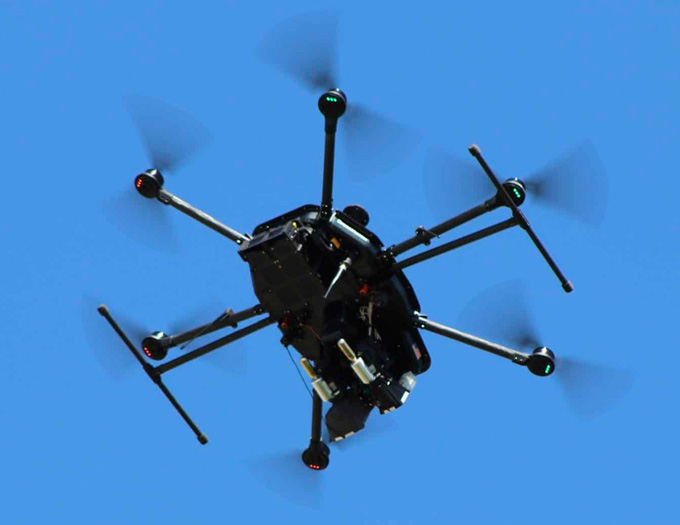
-
While many competing drone solutions utilize camera systems that only have a ~30X zoom, SkyDome System 3.7 offers visual validation up to three times further utilizing an 88X zoom camera.
-
In conjunction with Fortem TrueView radar, this enhanced visual validation range now allows Fortem to boast one of the longest end-to-end detection, validation, and mitigation ranges in the industry.
-
SkyDome System 3.7 also introduced urban clutter suppression algorithms which allows the system to accurately view threatening drones in urban and other high clutter environments.
(Drone sales have exploded in the past few years, filling the air with millions of new aircraft. Simple modifications to these drones by criminals and terrorists have left people, privacy and physical and intellectual property totally exposed. Courtesy of Fortem Technologies, and YouTube.)
The Annual ‘ASTORS’ Awards highlight the most cutting-edge and forward-thinking security solutions coming onto the market today, to ensure our readers have the information they need to stay ahead of the competition and keep our Nation safe – one facility, street, and city at a time.

AST Honors Thomas Richardson, FDNY Chief of Department; Dr. Kathleen Kiernan, President of NEC National Security Systems; and Richard Blatus, FDNY Assistant Chief of Operations, at the 2021 ‘ASTORS’ Awards Luncheon at ISC East.
The United States was forever changed 20 years ago on September 11th, and we were fortunate to have many of those who responded to those horrific tragedies join us at the 2021 ‘ASTORS’ Awards Luncheon.
In the days that followed 9/11, the critical needs of protecting our country catapulted us into new and innovative ways to secure our homeland – which is how many of the agencies and enterprise organizations that are today ‘ASTORS’ Awards Champions, came into being.

Our keynote speaker featured a moving and informative address from TSA Administrator and Vice-Admiral of the United States Coast Guard (Ret), David Pekoske; to our attendees who traveled from across the United States and abroad, on the strategic priorities of the 64,000 member TSA workforce in securing the transportation system, enabling safe, and in many cases, contactless travel.

Legendary Police Commissioner William Bratton of the New York Police Department, the Boston Police Department, and former Chief of the Los Angeles Police Department was also live at the event, meeting with attendees and signing copies of his latest work ‘The Profession: A Memoir of Community, Race, and the Arc of Policing in America,’ courtesy of the generosity of our 2021 ‘ASTORS’ Awards Premier Sponsors.
The 2021 ‘ASTORS’ Awards Program was Proudly Sponsored by AMAROK, Fortior Solutions and SIMS Software, along with Returning Premier Sponsors ATI Systems, Attivo Networks, Automatic Systems, and Reed Exhibitions.
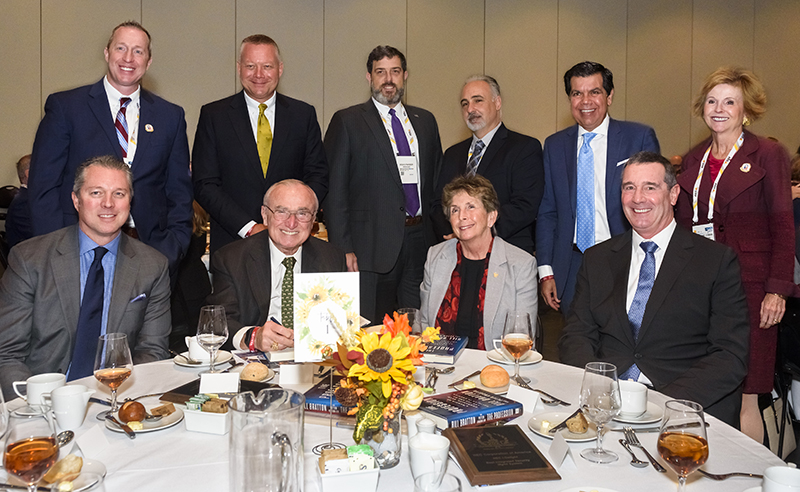
Why American Security Today?
The traditional security marketplace has long been covered by a host of publications putting forward the old school basics to what is Today – a fast-changing security landscape.
American Security Today is uniquely focused on the broader Homeland Security & Public Safety marketplace with over 75,000 readers at the Federal, State, and local levels of government as well as firms allied to the government.
American Security Today brings forward a fresh compelling look and read with our customized digital publications that hold readers’ eyes throughout the story with cutting-edge editorial that provides solutions to their challenges.
Harness the Power of the Web – with our 100% Mobile Friendly Publications

AST Digital Publications are distributed to over 75,000 qualified government and homeland security professionals, in federal, state, local, and private security sectors.
‘PROTECTING OUR NATION, ONE CITY AT A TIME’
AST Reaches both Private & Public Experts, essential to meeting these new challenges.
Today’s new generation of public safety and security experts need real-time knowledge to deal with domestic and international terrorism, lone wolf attacks, unprecedented urban violence, shifts in society, culture, and media bias – making it increasingly difficult for Homeland Security, Law Enforcement, First Responders, Military and Private Security Professionals to implement coordinated security measures to ensure national security and improve public safety.
These experts are from Government at the federal, state, and local level as well as from private firms allied to the government.
AST provides a full plate of topics in our AST Monthly Magazine Editions, AST Website, and AST Daily News Alerts, covering 23 Vital Sectors such as Access Control, Perimeter Protection, Video Surveillance/Analytics, Airport Security, Border Security, CBRNE Detection, Border Security, Ports, Cybersecurity, Networking Security, Encryption, Law Enforcement, First Responders, Campus Security, Security Services, Corporate Facilities, and Emergency Response among others.
AST has Expanded readership into integral Critical Infrastructure audiences such as Protection of Nuclear Facilities, Water Plants & Dams, Bridges & Tunnels, and other potential targets of terrorism.
Other areas of concern include Transportation Hubs, Public Assemblies, Government Facilities, Sporting & Concert Stadiums, our Nation’s Schools & Universities, and Commercial Business Destinations – all enticing targets due to the large number of persons and resources clustered together.
(See just a few highlights of American Security Today’s 2021 ‘ASTORS’ Awards Presentation Luncheon at ISC East. Courtesy of My Pristine Images and Vimeo.)
To learn more about ‘ASTORS’ Homeland Security Award Winners solutions, be on the lookout for the 2021 ‘ASTORS’ CHAMPIONS Edition Fully Interactive Magazine – the Best Products of 2021 ‘A Year in Review’.
The Annual CHAMPIONS edition includes a review of Annual ‘ASTORS’ Award Winning products and programs, highlighting key details on many of the winning firm’s products and services, including video interviews and more.
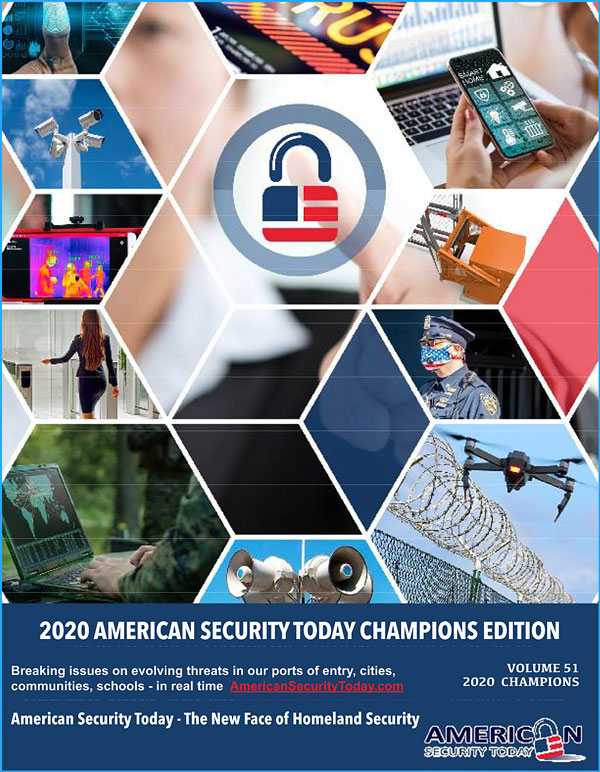
It will serve as your Go-To Source throughout the year for ‘The Best of 2021 Products and Services‘ endorsed by American Security Today, and can satisfy your agency’s and/or organization’s most pressing Homeland Security and Public Safety needs.
From Physical Security (Access Control, Critical Infrastructure, Perimeter Protection, and Video Surveillance Cameras and Video Management Systems), to IT Security (Cybersecurity, Encryption, Data Storage, Anti-Malware and Networking Security – Just to name a few), the 2021 ‘ASTORS’ CHAMPIONS EDITION will have what you need to Detect, Delay, Respond to, and Mitigate today’s real-time threats in our constantly evolving security landscape.
It will also include featured guest editorial pieces from some of the security industry’s most respected leaders, and recognized firms in the 2021 ‘ASTORS’ Awards Program.
-
For a complete list of 2021 ‘ASTORS’ Award Winners, begin HERE.
For more information on All Things American Security Today, as well as the 2021 ‘ASTORS’ Awards Program, please contact Michael Madsen, AST Publisher at mmadsen@americansecuritytoday.com.
AST strives to meet a 3 STAR trustworthiness rating, based on the following criteria:
- Provides named sources
- Reported by more than one notable outlet
- Includes supporting video, direct statements, or photos












